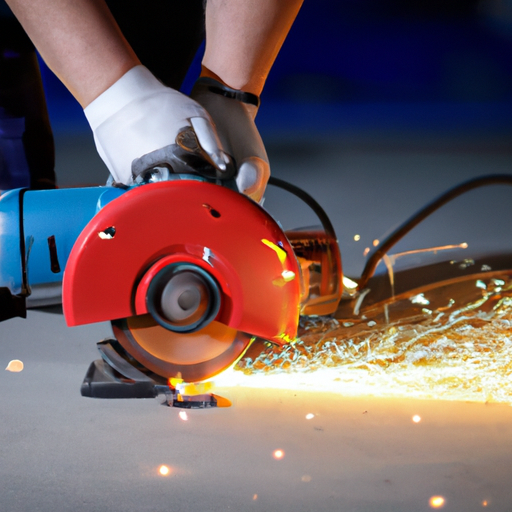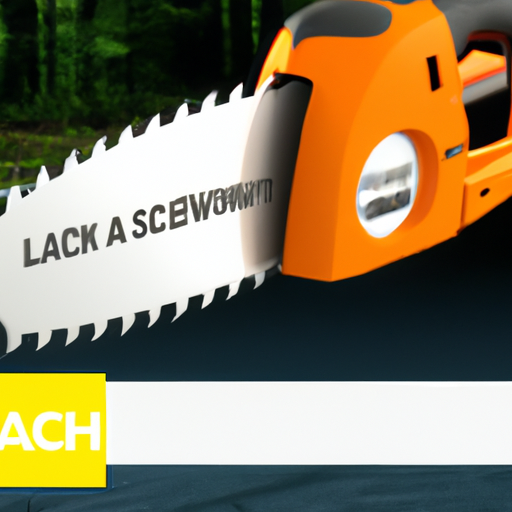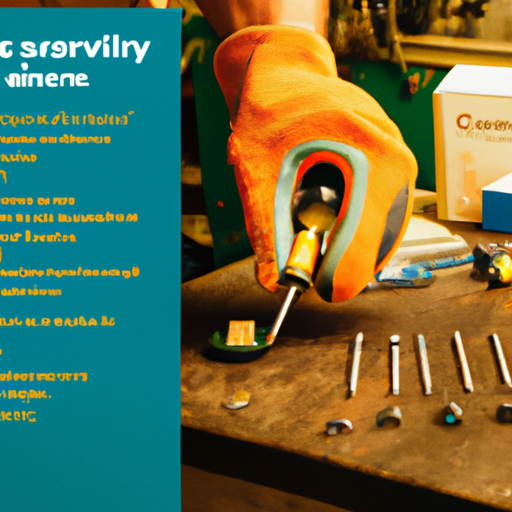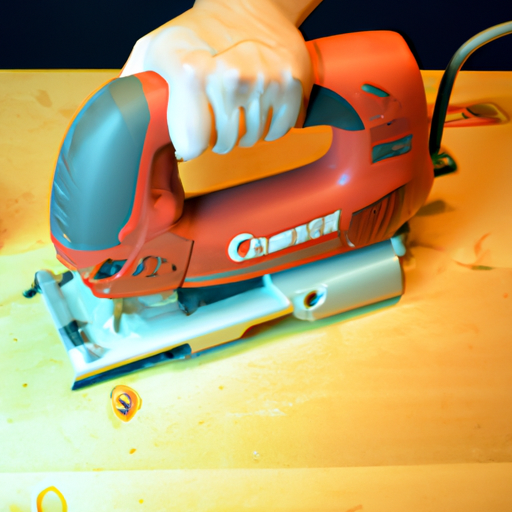Have you ever wondered how to use a battery-powered grinder safely? Well, you’re in luck because we’ve got all the information you need right here! Whether you’re a seasoned DIYer or just getting started, using a grinder can be a useful skill to have. In this article, we’ll walk you through the steps to ensure you can use a battery-powered grinder safely and effectively. So, let’s dive in and learn more about this handy tool!
First things first, before using a battery-powered grinder, it’s important to familiarize yourself with the tool. Take some time to read the manual and understand its features and functions. Make sure you know how to properly install and secure the grinding disc or attachments. This will not only ensure your safety but also help you achieve the desired results.
Now that you’re familiar with the grinder, let’s talk about safety precautions. Always wear suitable protective gear, such as safety goggles, gloves, and a dust mask, to protect yourself from any potential hazards. It’s also crucial to work in a well-ventilated area to minimize the risk of inhaling dust or fumes. And always remember to keep your fingers and hands away from the moving parts of the grinder to avoid any accidents.
Once you’ve taken all the necessary precautions, it’s time to use the grinder. Start by choosing the right disc or attachment for your task, whether it’s cutting, grinding, or polishing. Hold the grinder with a firm grip and maintain a steady hand and posture while working. If possible, secure your workpiece firmly to prevent any movement while you’re operating the grinder. And remember to take breaks when needed, as using a grinder can be physically demanding.
In conclusion, using a battery-powered grinder can be a safe and rewarding experience when done correctly. By familiarizing yourself with the tool, taking safety precautions, and using proper technique, you’ll be able to achieve the desired results while keeping yourself protected. We hope this article has provided you with valuable insights on how to use a battery-powered grinder safely. So go ahead and give it a try on your next project!
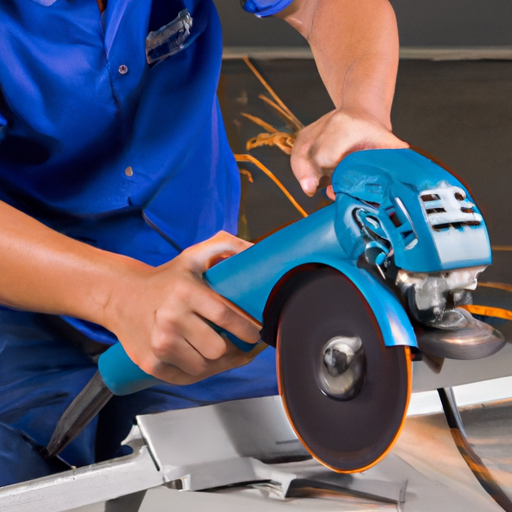
Choosing the Right Grinder
Battery-powered grinders are a versatile tool that can be handy for many different applications. Whether you are a DIY enthusiast or a professional, it’s important to choose the right grinder for the job at hand. In this section, we will discuss the factors you need to consider when choosing a battery-powered grinder.
Considering the Purpose
Before purchasing a battery-powered grinder, it’s essential to identify the intended use. Some grinders are designed for specific tasks, such as cutting, grinding, or polishing. Knowing the purpose for which you will primarily use the grinder will help you determine which features and specifications are necessary.
For example, if you plan to use the grinder for cutting metal, you would need a grinder with a high RPM (Revolutions Per Minute) and a cutting wheel attachment. On the other hand, if you intend to use it for grinding or polishing, you might prioritize a grinder with variable speed settings and different types of grinding wheels.
Evaluating Power and Speed
The power and speed of a battery-powered grinder play a crucial role in its performance. These two factors are typically measured in volts and RPM, respectively.
Grinders with higher voltages generally offer more power, which can be beneficial for heavy-duty tasks. However, keep in mind that higher voltage grinders may also be heavier and bulkier, which can affect maneuverability. For lighter tasks, a lower voltage grinder might be sufficient.
The RPM of a grinder determines how fast the wheel spins. For cutting and grinding, higher RPMs are generally preferred as they provide more efficient and precise results. However, it’s important to note that higher RPMs also increase the risk of accidents and require more careful handling.
Examining Safety Features
Safety features are an essential aspect to consider when choosing a battery-powered grinder. These features ensure your protection and minimize the risk of accidents while using the tool.
Look for grinders with features like trigger locks, which prevent unintentional activation, and anti-vibration handles, which reduce hand fatigue and enhance control. Additionally, grinders with adjustable safety guards allow you to position the guard in a way that provides maximum protection while working.
It’s also crucial to ensure that the grinder you choose has a reliable braking system. This feature helps stop the grinding wheel quickly after you release the trigger, minimizing the risk of injuries.
Understanding the Components
Once you have chosen the right battery-powered grinder, it’s essential to familiarize yourself with its various components. Understanding the parts of the grinder will help you use it safely and effectively.
Identifying the Grinder Parts
A typical battery-powered grinder consists of several key parts:
-
Handle: The handle allows you to grip and control the grinder while in use. Look for grinders with ergonomic handle designs for improved comfort and stability.
-
Power switch: The power switch, usually located near the handle, allows you to turn the grinder on and off.
-
Battery compartment: This is where you insert and secure the battery. Make sure the battery compartment is clean and free of any debris or damage.
-
Grinder head: The grinder head houses the grinding wheel and other attachments. It’s important to ensure that the grinding wheel is properly secured before operating the grinder.
Exploring the Battery
The battery is a critical component of a battery-powered grinder. Before using the grinder, it’s important to inspect the battery and ensure it is in good condition. Follow these steps to handle the battery safely:
-
Check the battery for any signs of damage, such as cracks or leaks. If you notice any damage, do not use the battery and replace it immediately.
-
Make sure the battery is fully charged before using the grinder. A fully charged battery will provide optimal performance.
-
Follow the manufacturer’s instructions for charging and maintaining the battery. Overcharging or improperly handling the battery can lead to malfunctions and accidents.
Analyzing the Grinding Wheel
The grinding wheel is the key tool used in a battery-powered grinder. It’s essential to select the right grinding wheel for your specific task. Follow these guidelines when analyzing the grinding wheel:
-
Check the compatibility of the grinding wheel with your grinder. Different grinders require specific types and sizes of grinding wheels.
-
Inspect the grinding wheel for any cracks, chips, or other signs of damage. Using a damaged grinding wheel can lead to accidents and injuries.
-
Ensure that the grinding wheel is properly installed and tightened before use. A loose or improperly fitted grinding wheel can cause unstable operation and pose a safety hazard.
Preparation and Safety Measures
Before operating a battery-powered grinder, proper preparation and safety measures are crucial to ensure a safe working environment. This section will guide you through the necessary steps for preparation and safety.
Inspecting the Grinder
Before you start using the grinder, take a few moments to inspect it thoroughly. Look for any loose or damaged parts, such as the grinding wheel, handle, or safety guard. Ensure that all components are securely fastened and in good working condition.
If you notice any issues, do not use the grinder until the problem is addressed. Operating a faulty grinder can result in accidents and injuries.
Ensuring Proper Personal Protective Equipment
Wearing the appropriate personal protective equipment (PPE) is essential when using a battery-powered grinder. PPE helps protect you from potential hazards, such as flying debris, sparks, and noise.
At a minimum, always wear safety glasses or a face shield to protect your eyes from debris. Additionally, sturdy work gloves can help protect your hands from cuts and burns. Depending on the task, you may also need to wear ear protection, a dust mask, and long sleeves to protect your skin.
Clearing the Workspace
Before using the grinder, make sure your workspace is clean and free of any potential hazards. Remove clutter, loose objects, and any flammable materials from the area. This will help prevent accidents and minimize the risk of fire hazards.
Ensure that the workspace is well-lit, allowing you to see clearly while operating the grinder. Adequate lighting can help you identify potential dangers and work more safely and efficiently.
Battery Handling
Proper handling of the battery is essential for the safe and effective use of a battery-powered grinder. This section will cover the necessary steps for charging, maintaining, and storing the battery.
Charging and Maintaining the Battery
To ensure optimal performance and prolong the lifespan of your battery, follow these guidelines for charging and maintenance:
-
Use the charger provided by the manufacturer. Using an incompatible charger can damage the battery and pose safety risks.
-
Read and follow the manufacturer’s instructions for charging times and procedures. Overcharging the battery can reduce its lifespan and increase the risk of malfunctions.
-
Store the battery at room temperature in a dry and well-ventilated area. Extreme temperatures and humidity can negatively affect the battery’s performance.
Handling Battery Storage
When not in use, it’s essential to store the battery properly to prevent damage and maximize its lifespan. Follow these tips for safe battery storage:
-
Remove the battery from the grinder when not in use. This prevents accidental activation and prolongs the battery’s charge.
-
Store the battery in a cool, dry place away from direct sunlight and moisture. Avoid exposing the battery to extreme temperatures as it can affect its performance.
-
Keep the battery away from flammable materials and other objects that can damage or puncture it.
Battery Safety Precautions
While handling the battery, be aware of the following safety precautions:
-
Never attempt to disassemble or modify the battery. Doing so can result in electric shock, fires, or other hazardous situations.
-
If the battery becomes damaged, such as if it is punctured or overheated, do not continue using it. Dispose of the damaged battery according to local regulations.
-
Do not expose the battery to water or other liquids. Water damage can cause malfunctions and pose safety risks.
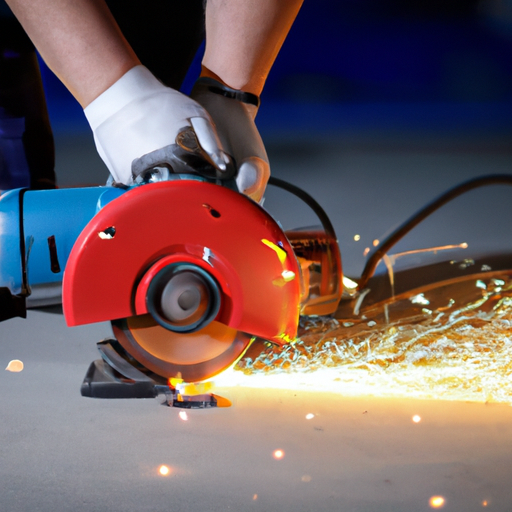
Operating the Battery-Powered Grinder
After ensuring that your grinder and battery are in proper working condition, it’s time to start using the battery-powered grinder. This section will guide you through the steps to operate the grinder safely and efficiently.
Positioning and Stability
Before starting the grinder, position yourself in a stable and comfortable stance. Keep your feet shoulder-width apart and firmly planted on the ground. This will provide stability and allow better control while using the grinder.
Hold the grinder with both hands, ensuring a secure grip on the handle. Avoid overreaching or leaning while operating the grinder, as this can compromise your balance and control.
Activating the Grinder
To activate the grinder, locate the power switch and firmly press it with your thumb or finger. Ensure that the power switch is easily accessible and can be quickly turned off in case of an emergency.
After activating the grinder, wait for the grinding wheel to reach its maximum speed before applying it to the workpiece. Premature contact can result in a loss of control and damage to the material being worked on.
Controlling Speed and Pressure
Controlling the speed and pressure during operation is crucial for achieving accurate and safe results. Follow these guidelines:
-
Maintain a consistent speed throughout the grinding process. Rapidly changing the speed can lead to uneven grinding or damage the material.
-
Avoid excessive pressure on the grinder. Applying too much force can cause the grinding wheel to bind or kick back, posing a significant risk of injury.
-
Let the grinder do the work. Do not force the grinding wheel onto the material. Instead, allow the rotation of the wheel and the weight of the grinder to apply the necessary pressure.
Safe Grinding Techniques
Using the correct grinding wheel and employing safe grinding techniques are essential for a successful grinding operation. This section will provide guidance on selecting the right grinding wheel and maintaining proper grip.
Choosing the Correct Grinding Wheel
Different tasks require different types of grinding wheels. Consider the material you are working on and select a grinding wheel designed for that specific material. Consult the grinder’s manual or a professional for guidance if you are unsure.
Inspect the grinding wheel for any damage before each use. A damaged grinding wheel should be replaced immediately to prevent accidents.
Maintaining Proper Grip
Maintaining a proper grip on the grinder is essential for safety and control. Keep the following tips in mind:
-
Use both hands to firmly grip the grinder handle. This will enhance stability and control during operation.
-
Keep your fingers away from the grinding wheel and other moving parts. Accidentally touching the wheel can result in severe injuries.
-
Avoid wearing loose clothing or jewelry that could get caught in the grinder. Loose items pose a significant safety risk and can be easily entangled in the moving parts.
Avoiding Inappropriate Grinding
Never use a battery-powered grinder for tasks it is not designed for. Grinding wheels are designed for specific materials and applications. Using the grinder for unintended purposes can lead to accidents, damage to the grinder, or poor results.
Always read the manufacturer’s instructions and recommendations for safe and appropriate use. If you are unsure whether a specific task is suitable for your grinder, consult a professional.
Dealing with Sparks and Dust
Using a battery-powered grinder generates sparks and creates dust, both of which can pose safety hazards. This section will cover measures to mitigate fire hazards, protect against eye injuries, and minimize respiratory risks.
Mitigating Fire Hazards
When working with a battery-powered grinder, take precautions to prevent fires:
-
Ensure that there are no flammable materials in the vicinity of your workspace. Sparks generated during grinding can ignite flammable substances.
-
Keep a fire extinguisher or a bucket of sand nearby for quick access in case of an emergency.
Protecting Against Eye Injuries
Grinding creates debris and sparks that can cause eye injuries. Protecting your eyes is of utmost importance. Wear safety glasses or a face shield that provides appropriate coverage and meets safety standards.
Regularly inspect your eye protection gear for cracks or scratches. Damaged eye protection should be replaced immediately.
Minimizing Respiratory Risks
Grinding operations often generate dust or fumes that can be harmful if inhaled. Minimize respiratory risks by following these tips:
-
Wear a dust mask or a respirator that is suitable for the materials being worked on. Ensure that the mask fits properly and provides adequate protection.
-
Work in a well-ventilated area or use local exhaust ventilation to remove dust and fumes from the workspace.
-
After the grinding operation, clean up any accumulated dust or debris using appropriate cleaning methods, such as wet sweeping or vacuuming.
Routine Maintenance and Cleaning
Regular maintenance and cleaning of your battery-powered grinder will ensure its longevity and optimal performance. This section will provide guidance on inspecting and cleaning the grinder, replacing grinding wheels, and lubricating moving parts.
Inspecting and Cleaning the Grinder
Regularly inspect the grinder for any signs of wear, damage, or loose parts. Tighten any loose screws or bolts and replace any damaged components. Inspecting the grinder before each use will help identify potential issues and prevent accidents.
Cleaning the grinder after each use is also essential. Remove any debris, dust, or other materials from the tool, especially around the grinding wheel. Use a soft brush or a compressed air canister to clean hard-to-reach areas.
Replacing the Grinding Wheel
Over time, the grinding wheel will wear down and lose its effectiveness. Replace the grinding wheel when it becomes noticeably worn or damaged. Consult the grinder’s manual or a professional if you are unsure how to replace the grinding wheel properly.
When replacing the grinding wheel, make sure to select the correct size and type and follow the manufacturer’s instructions.
Lubricating Moving Parts
Lubricating moving parts, such as the handle pivot or the battery compartment, can help maintain smooth operation and prolong the life of your grinder. Refer to the grinder’s manual for specific lubrication instructions and use the recommended lubricant.
Apply lubricant sparingly, as excessive lubrication can attract dust and debris, leading to malfunctions.
Troubleshooting Common Issues
Even with proper care and maintenance, grinders can experience malfunctions or issues. This section will address common grinder problems and provide guidance on how to resolve them.
Identifying Grinder Malfunctions
If you notice any unusual sounds, vibrations, or overheating while operating the grinder, stop using it immediately and inspect for potential issues. Common signs of malfunctions include:
-
Grinding wheel wobbling or vibrating excessively.
-
Lack of power or reduced performance.
-
Difficulty turning the grinder on or off.
Resolving Power or Battery Problems
If you experience power or battery-related issues with your grinder, follow these troubleshooting steps:
-
Check the battery for proper insertion and connection. Ensure that it is securely in place and making a proper connection.
-
If the battery is fully charged, but the grinder lacks power, try using a different battery to determine if the problem lies with the battery or the grinder.
-
If the battery does not hold a charge or drains quickly, it may need to be replaced. Consult the manufacturer or a professional for assistance.
Fixing Grinding Wheel Issues
If you encounter any issues with the grinding wheel, such as wobbling or poor performance, follow these steps:
-
Ensure that the grinding wheel is properly installed and tightened. A loose wheel can cause instability and compromise safety.
-
Check the condition of the grinding wheel. Replace it if it is worn, damaged, or incompatible with the task at hand.
-
Inspect the grinder’s housing and attachments for any signs of misalignment or damage. Misalignment can affect the performance of the grinding wheel.
Conclusion
Using a battery-powered grinder can significantly simplify your cutting, grinding, and polishing tasks. However, it’s crucial always to prioritize safety during operation. By selecting the right grinder, understanding its components, following safety measures, and employing safe grinding techniques, you can use a battery-powered grinder safely and effectively.
Remember to consider the purpose of your grinder, evaluate its power and speed, and examine safety features when choosing the right model. Understand the different grinder parts, explore the battery, and analyze the grinding wheel to ensure proper functioning. Prepare your workspace, inspect the grinder, and equip yourself with the necessary personal protective equipment.
Handle the battery with care, following proper charging, maintenance, and storage procedures. Operate the grinder with stability, control, and adherence to speed and pressure guidelines. Choose the correct grinding wheel, maintain a proper grip, and avoid inappropriate grinding techniques. Mitigate fire hazards, protect against eye injuries, and minimize respiratory risks associated with sparks and dust.
Routine maintenance and cleaning are essential to keep your grinder in optimal condition. Inspect and clean the grinder regularly, replace the grinding wheel as needed, and lubricate moving parts according to the manufacturer’s recommendations. Troubleshoot common issues, including grinder malfunctions, power or battery problems, and grinding wheel issues.
Always emphasize the importance of safety when using a battery-powered grinder. Follow the manufacturer’s instructions and recommendations, seek professional guidance when necessary, and continuously educate yourself on proper usage techniques. By prioritizing safety, you can confidently utilize a battery-powered grinder, completing your tasks efficiently and without compromising your well-being.
